News
Declining Standards in Higher Education in India

Gone are the days when most Indian institutions of higher learning were prominent sources of original ideas. These institutions were once pivotal in the knowledge production process. Teachers, researchers, students and other intellectuals engaged in rigorous debates and discussions as part of that process. They were deeply committed to the quest for knowledge.
At that time, the government did not interfere with the autonomy of universities. That independence promoted the open exchange of ideas and the development of milestones in knowledge production.
The great philosopher and former India President Sarvepalli Radhakrishnan, A. P. J. Abdul Kalam, Mokshagundam Visvesvaraya, Jagadish Chandra Bose, Amartya Sen, Bipin Chandra, Andre Beteille, Jayant Narlikar, Gopi Chand Narang, Irfan Habib, Arvind Panangariya and Abhijit Banerjee are a few examples of the distinguished leaders produced by the intense intellectual exercise, academic rigor and firm devotion of this bygone era. Their education inspired them to make an impact on the world that is well-recognized globally.
Universities were once great
Today entire higher education system is directionless and unable to respond to the socio-economic and political challenges India faces. Pass rates are up even though attendance is down; clearly, instructors are inflating grades to make up for the decline in student performance. Meanwhile, skilled teachers are increasingly hard to find and nearly one-fifth of positions are vacant. Why have the previously glorious Indian universities declined to such an abysmal level? There are many reasons for this sorry state of affairs.
These problems developed gradually during the decades following independence. Previously, education was considered a noble profession. Back then, educators were devoted to their mission. Universities utilized their autonomy, state funding and position of honor to reach new academic horizons. They flourished as higher learning and research institutions because they always promoted merit and employed the most talented professors. Meritocracy was fruitful. Universities achieved the pinnacle of academic excellence in every field of knowledge.
Over the years, universities substituted merit with nepotism. Faculty and administrators used their positions to serve their families and selfishly used university resources to benefit themselves.
Corruption accusations mounted, from selecting faculty based on family ties, misuse of infrastructure grants, awarding scholarships to needy students, harassment of research scholars and many other academic and administrative indiscretions. There was also an unwillingness to update outdated curricula and teaching methods. This set the stage for the government to regulate institutions of higher learning.
Government made things worse
The increase in government regulations did not mean increases in spending on education. Total spending may have increased, but as a percentage of GDP, government spending on education has decreased since 2014. A staggering interim decrease of 16% in allocations for higher education accompanied this in 2024.
Brain drain is another major challenge for our country. The system cannot attract the best talent in India because they migrate to foreign universities for better educational opportunities. After completing their degrees, they settle there, benefiting the host country.
Intellectuals in India also contribute to the decline in the quality of higher education with their lack of seriousness. They perform their duties casually, devoid of the spirit and zeal once deeply ingrained in intellectual life and scholarship.
After much hype, the government implemented the National Education Policy of 2020. It gravely hurt the erstwhile excellent teaching environment, particularly in non-professional undergraduate and post-graduate colleges, by intermixing the arts, humanities, social sciences, hard sciences, commerce and other subjects. This created a cacophony in the curriculum and a ballooning number of students and academics.
Both students and teachers pursuing the policy are confused and directionless. Teachers are helpless to pursue this academic mush. The expectation that students become jacks of all trades is detrimental to the deep and diverse knowledge once taught in Indian universities.
Copying professional institutions like IIMs or IITs by introducing a semester system with three tests and one project each semester burdens students. The increasing number of students in each academic session makes it difficult for teachers to properly and seriously evaluate them, resulting in an additional burden for teachers. Further, year-round testing provides few days for classroom teaching.
Unfortunately, it is not clear what today’s government wants for India’s future. The new generation may emerge as intellectually paralyzed with no serious interest in pursuing undiscovered knowledge – which used to make Indian universities glorious. Or, they may become mediocre so-called “intellectuals,” unable to authentically pursue truth in the academy and honesty in life. What nation will this state of affairs create?
The politicization of higher education may be the biggest challenge in India. Only a few institutions of higher learning, like the Indian Institute of Science, the Indian Institutes of Technology and the Indian Institutes of Management, are not subject to the bureaucratic creep brought on by increased government control. As a result of administrative overreach, universities lost sight of their vision and mission. Now, they are simply upholding the policies and political programs of the government in power.
Governments appoint ideological cronies as vice-chancellors and directors, the chief academic-executive officers of universities. They also influence the appointment of faculty, monitor syllabi and curricula development to indoctrinate students in favor of their policies.
Economic concerns and the power-hungry nature of Indian society push younger generations to find work in the civil services because they offer opportunities to grab power and make money.
Today, teaching is a last resort for young people. It is considered an alternative after failing to enter the civil services or engineering, medical or management schools. These rejects are poor teachers and researchers because they lack enthusiasm and commitment. Instead, they indulge in unionism, money-making and other disreputable activities.
There is hope for higher ed in India
We need to do much to revamp higher education in India. First and foremost, we must recognize the appropriate role of teachers in nation-building. They should not perform non-teaching functions like facilitating general elections, administering polio drops or going door-to-door to administer the national census.
Bureaucratic wrangling must not dilute respect for teachers. The autonomy of higher education, especially curricula and research subjects, must not be controlled by the state. Universities must also receive adequate government funding.
We urgently need a healthy public debate that compares the major differences between Indian and world-class universities. This can set the direction for bold structural reforms in higher education based on what world-class schools are doing right.
Information technology should play a role in creating a knowledgeable society and world-class universities in India. If properly utilized, Information Technology can tremendously impact student growth and foster learning, especially during the COVID crisis. Today’s students prefer classes that use modern technology because it supports learning. There is also a rising preference among students for digital libraries.
India must strive for multi-dimensional and broad-based quality education to maintain its leadership in the 21st century. Right now, Indian education is “not competitive.” To ensure survival and growth in today’s competitive business environment, institutions of higher education must monitor their performance periodically and make necessary changes to adapt to new circumstances.
Without significant reforms, the Indian higher education system risks creating isolated pockets of excellence while failing to adequately serve the nation as a whole.
The Kothari Commission (1964–1966) reminds us of the importance of maintaining quality in higher education, saying, “The situation of higher education was unsatisfactory and even alarming in some ways that the average standards have been falling and rapid expansion has resulted in lowering quality.”
Competitive participation in the global community of institutions of higher learning requires significant determination. The benchmark set by developed countries may be the standard. However, middle-income countries should not give up their cultural-intellectual traditions while staying relevant in the global intellectual community. Middle-income countries must also be wary not to fall victim to emerging neo-colonial threats.
In a world of rapid change with endless educational possibilities, Indian higher education must adapt to the challenges of the contemporary world and explore new vistas of unexplored knowledge in the interest of humanity.
[Joey T. McFadden edited this piece.]
The views expressed in this article are the author’s own and do not necessarily reflect Fair Observer’s editorial policy.
Travel
European destination named top holiday spot for 2025 is so close you can you reach it by ferry
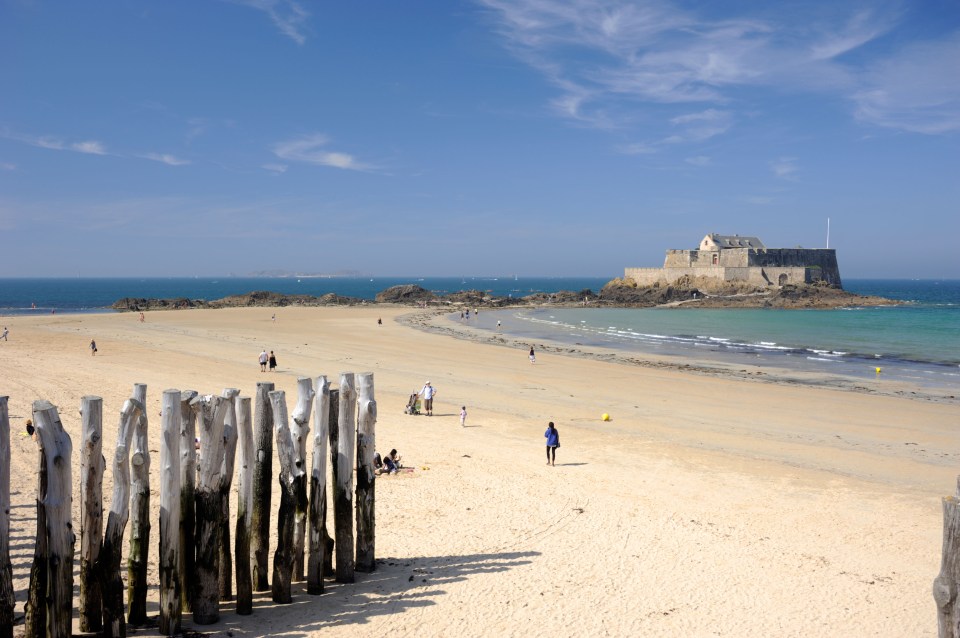
A FRENCH region has been revealed as one of the must-visit places for next year – and a ferry from England can get you there in just over five hours.
Brittany in France has made the list of trending destinations for 2025, with distinctive culture, coastal scenery, and miles of seaside walking paths on offer for visitors.
The list of places was put together by American Express based on card member travel bookings and expertise from its global network of travel consultants.
France’s northwestern most region has been growing in popularity in recent years, particularly because of its beautiful sandy beaches, secluded coves, and rocky formations.
One beach that’s proven popular among holidaymakers because of its long stretch of sandy beach, stunning views, and tranquil waters is Plage de Tahiti.
Backed by pines, the beach is wide enough to feel spacious even in the busiest seasons.
And the sand is soft, very nearly white, with sea that often sparkles turquoise.
Brittany is also a popular destination for walking and hiking, with over 10,000 kilometres of signposted routes.
The GR34 is the most famous walking route – a 388-mile trail that runs along the north coast.
Also known as the Customs Officers’ Path, it features cliffs, beaches, fishing villages, and seaside resorts.
It’s suitable for moderately fit walkers and the best time to hike it is in late Spring and early Autumn.
Known as the jewel of southern Brittany is the Quiberon Peninsula, with wild coastline that stretches over 30 kilometres.
The peninsula has around 19 beaches, including Fort Neuf beach, Porigo beach, Saint Pierre-Quiberon beach, Castéro beach, and Saint Julien beach, and it’s one of the best places to enjoy water sports.
Sea fishing, sailing, sand yachting, sea kayaking, and kite surfing are all popular here.
But if you prefer to stay on land, there are plenty of walking and cycling routes to enjoy.
Mont-Saint-Michel is one of the region’s most famous attractions, located in the bay shared by Normandy and Brittany.
There’s a medieval abbey with striking architecture and panoramic views of the bay, and the village’s narrow, cobblestone streets are lined with shops, cafes and restaurants.
One of the best ways to get to Mont Saint-Michel is by ferry, from the Saint-Malo or Granville ferry terminals.
Ferry is a popular option for travelling to Brittany from the UK – although the time it takes to travel depends on the route and ferry you take.
Brittany Ferries travel from Plymouth to Roscoff in 5 hours and 15 minutes and Portsmouth to St-Malo 10 to 12 hours overnight.
Or you can travel on Condor Ferries from Poole to St-Malo in 6 hours and 20 minutes.
Amex’s Trending Destinations list was put together with Millennial and Gen Z travellers in mind.
A study conducted by the company found 72 percent of Millennial and Gen Z travellers are more likely to book hotels that offer credit card rewards and 70 percent are interested in a credit card with a collection of hotel benefits across the world.
As such, American Express Travel has added new benefits and expanded its Hotel Collection to include more properties in destinations Card Members are visiting.
The collection includes upscale hotels located near city centres, popular tourist attractions, great restaurants, and active nightlife.
2025 Trending Destinations list
Brisbane, Australia – located between the Gold and Sunshine Coasts, Brisbane offers excellent museums as well as vibrant dining and nightlife.
Brittany France – Distinctive culture, coastal scenery and miles of seaside walking paths like the GR34 trail top the list of reasons to visit the Brittany region.
Franschhoek, South Africa – Franschhoek, the mountain-ringed gem in the Cape Winelands region, is an ideal add-on to a safari vacation with nearly 50 wineries, farm-to-table restaurants and hiking.
Koh Samui, Thailand – 88-square-mile Koh Samui offers a dreamy combo of lush jungle, white sand beaches, and turquoise waters, perfect for active travelers or those looking to relax. The island will be featured on a popular TV show scheduled to air next year and is sure to inspire set-jetting travelers.
Macau, China – Though The Historic Centre of Macau enjoys UNESCO World Heritage status, and the local Cantonese-Portuguese fusion cuisine is a must-try for foodies, the supersized casinos are the reason this densely populated peninsula, known as the “Las Vegas of the East,” boasts a number of award-winning restaurants.
Moab, United States – As the gateway to Utah’s “Mighty Five” national parks, Moab is a perfect starting point to explore the American Southwest. Travelers come for world-class rafting, mountain biking, and canyon hiking – or simply to bask in the red rock scenery.
Nikko, Japan – This tucked away mountain retreat in mostly rural Tochigi prefecture blends elements of Kyoto and Mt. Fuji, with photogenic waterfalls and abundant hiking trails.
Paros, Greece – Laid-back Paros has become the Greek island of choice for many with a vibrant cultural scene and rocky coastline studded with beaches, secluded coves, and sea caves.
São Paulo, Brazil – This multi-ethnic city is one of the great cultural destinations of South America and home to rich architectural heritage and some of the continent’s best museums, street art, and homegrown fashion.
Sun Valley, Idaho, United States – With fewer crowds than other Western ski resorts, Sun Valley appeals to premium travellers and everyday outdoor enthusiasts alike. During the summer months travellers can enjoy trout fishing, whitewater rafting, mountain biking and more.
Additionally, when Gold and Platinum Card Members book two or more nights at these hotels through Amex Travel, they are eligible to receive a room upgrade upon arrival, 12 PM early check-in, and late check-out up to 4 PM (all subject to availability and certain room categories are not eligible for upgrade).
These benefits are in addition to a complimentary credit valued at $100 (around £76) to use towards eligible charges, which may include food and beverage, spa, or other on-property charges (eligible charges vary by property).
For more details, visit the Amex website.
News
Israeli attack helicopter seen firing missiles over border area with Lebanon

Israeli attack helicopter seen firing missiles over border area with Lebanon
Business
Biden tells Israel to consider ‘other alternatives’ to oilfield strikes
Brent crude chalked up its biggest one-day jump of 2024, with remarks by US President Joe Biden spurring speculation among traders over whether Israel could engage in retaliatory strikes against Iran’s oil industry.
The international oil benchmark settled 5 per cent higher at $77.62 a barrel, its biggest jump since October last year. West Texas Intermediate, the US marker, also gained more than 5 per cent to $73.71 a barrel.

Vikas Dwivedi, a global energy strategist at Macquarie Group, said he expected oil prices to rise in the short term, potentially jumping to $85 a barrel.
“This is a replay of Russia-Ukraine,” Dwivedi said, adding that the only way for prices to surge near $100 a barrel would be if there was a direct hit to oil export facilities. “We don’t think [a hit to oil supply] is a big concern.”
Money
Drinks brand once stocked in Sainsbury’s supermarkets plunges into administration
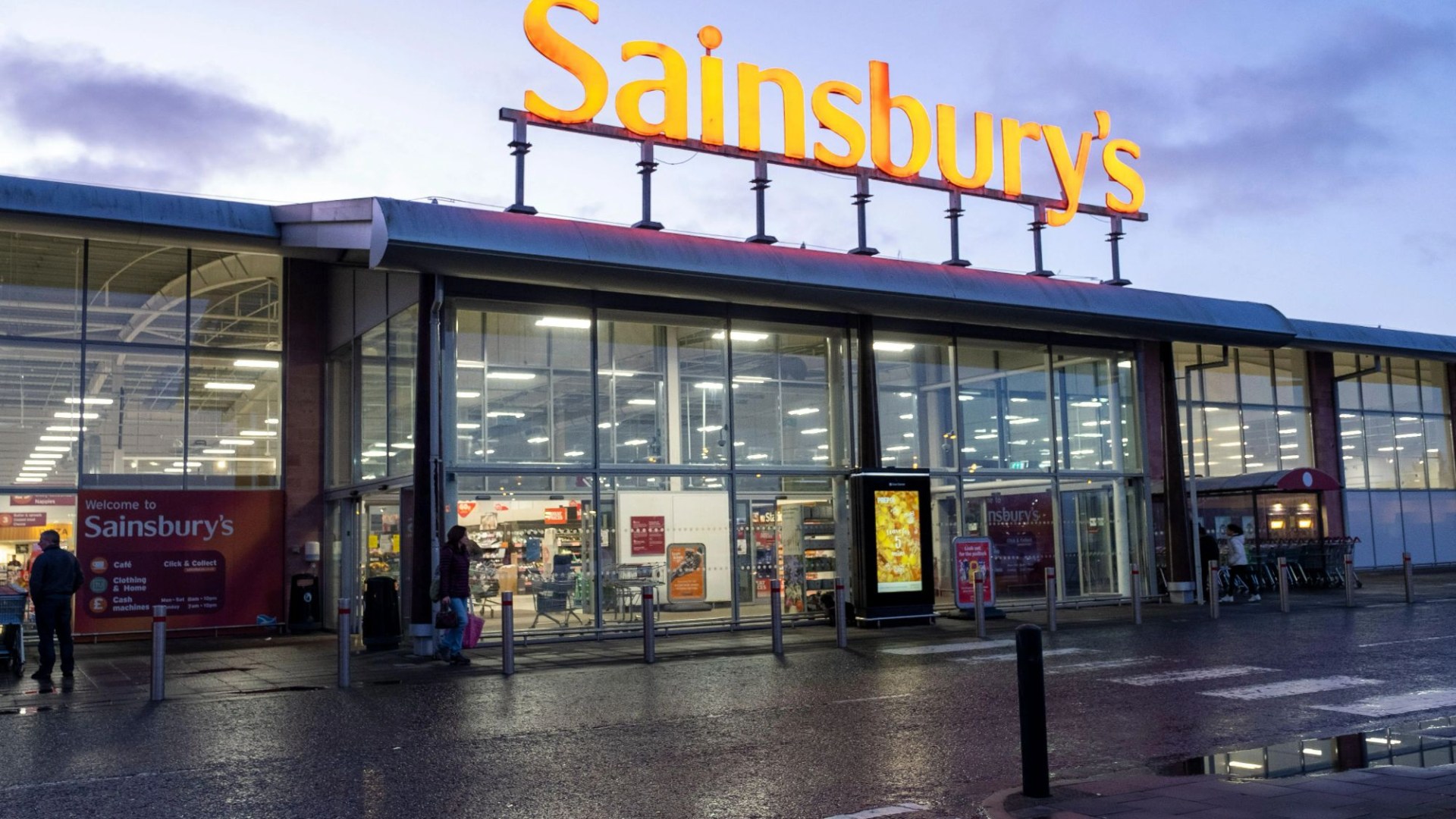
A POPULAR drinks brand once stocked in Sainsbury’s and Amazon has been plunged administration.
Natural soft drink company Square Root Drinks appointed and administrator on October 3.
It comes as the website link has been taken down, while stock is unavailable on Amazon.
The announcement was made on X (formally Twitter) by James Beeson, drinks editor at The Grocer.
He said: “Deeply saddened to hear Square Root London has gone into administration.
“I enjoyed my time working for Ed and Robyn – two people who put everything into the brand – tremendously, and owe them a great deal professionally and personally.
“My heart goes out to them both today.”
Square Root made its retail debut in February 2021, launching into Sainsbury’s through the retailer’s Future Brands initiative.
At the time, the company said it was “exciting to be recognised” by the supermarket as a “bold and authentic brand”.
The brand smashed a £250k crowdfunding drive, overfunding by 230 per cent to hit £577,444 from 570 investors in 2021.
Square Root offered a selection of alcohol-free mocktails and natural soft drink flavours, including Ginger Beer, Cola, non-alcoholic gin and tonic, lemonade, and more.
The company was founded in 2012 by Ed Taylor and Robyn Simms in East London.
Administration is when all control of a company is passed to an appointed licensed insolvency practitioner.
It doesn’t necessarily mean the end of the business.
Administration is when all control of a company is passed to an appointed licensed insolvency practitioner.
It doesn’t necessarily mean the end of the business.
But if the administration process can’t rescue the company or find a new owner, this can lead to liquidation.
Liquidation is the process of selling all assets and then dissolving the company completely.
COST OF LIVING PRESSURES
The number of craft breweries in the UK fell from 1,828 at the start of 2023 to 1,815 at the start of the year.
That now stands at 1,748 according to the latest figures up to June from the Society of Independent Brewers and Associates (SIBA).
The SIBA UK Brewery Tracker takes into account all brewery openings and closures to give an accurate picture of the number of active brewing businesses.
Craft breweries have been hit hard by the cost of living crisis and the pandemic.
While many producers pivoted to home deliveries during covid lockdowns, they were then hit by rising costs combined with people reigning ion their spending.
The prices of energy, rents and ingredients have all shot up. They have also faced higher interest rates when borrowing money to grow the business.
SIBA chief executive Andy Slee said when the latest figures on closures were published in July: “Independent brewers are reporting good sales growth and strong consumer demand, yet breweries continue to close.
“For most breweries the challenge is financial pressures from rising costs and market access, as well as lingering Covid debt – something SIBA has strongly lobbied Government for help on.”
UK BREWERY NUMBERS
The SIBA UK Brewery Tracker shows there are 1,748 breweries across the country
It covers the period from April 1 to June 30 this year and the net change compared to March 31, 2023.
- Scotland 133 (-3)
- Northern Ireland 29 (-)
- East 187 (-4)
- North East 248 (-3)
- North West 189 (-1)
- Wales 96 (-)
- South West 203 (-4)
- South East 331 (-3)
- Midlands 334 (-11)
- UK: 1,748 (-29)
News
Exploring Press Freedoms: Julian Assange’s Extradition
1.8K

/
We kick off this year focusing on press freedoms. We welcome back to the program independent journalist Kevin Gosztola, author of Guilty of Journalism: The Political Case Against Julian Assange. Gosztola joins the program to discuss the latest updates on Assange’s extradition case, the CIA spying lawsuit and a Congressional resolution process that’s begun. Later in the program we air a conversation between Kevin Gosztola and our cohost Eleanor Goldfield from last year. Kevin joined Eleanor at Red Emma’s in Baltimore to talk about his book, Guilty of Journalism.
Business
I lost my job due to Al Fayed

A long-serving former Harrods executive has claimed that his offer to become boss of the department store chain Fenwick was withdrawn because of his time working under Mohamed Al Fayed.
Al Fayed, who owned the luxury London store for more than two decades, has been accused of sexual assault or rape by more than 20 women following a BBC investigation.
Niegel Blow, who worked for 14 years at Al Fayed’s companies, said he “never heard about or witnessed” grooming, sexual assaults or rape.
He said he had been deemed “guilty by association” by Fenwick. Fenwick declined to comment.
“I worked at Harrods in senior roles from 2002 to 2007. I can confirm that, during my time at the business, I never heard about or witnessed any such behaviour by Mr Al Fayed.”
“I believe Fenwick’s action is unjustified, unfair and in breach of contract,” Mr Blow told the BBC.
Mr Blow also criticised the BBC over its reporting of executives who had worked with Al Fayed.
“It would appear that the BBC team is prepared to tarnish or ruin the reputation of every senior person who worked at Harrods during Mr Al Fayed’s ownership, under the serious and damaging misapprehension that of course they must have known.”
A BBC spokesperson said: “We stand fully behind our journalist and our journalism. This story, which was fully in the public interest, was produced in line with the BBC’s editorial standards, including contacting Mr Blow before publication.”
On Tuesday, Fenwick told the BBC that Nigel Blow had said he would no longer be taking up the position as their chief executive later this month.
No reason for the decision was given.
Mr Blow’s statement on Friday said that the Fenwick chair Sian Westerman told him it was not able to proceed with the employment “in order to safeguard the reputation of the Fenwick business.”
Fenwick declined to comment on this claim. The retailer, which is best known for its 140-year-old store in Newcastle, has eight stores around the UK.
Mr Blow joined Harrods in 1992.
There were several reports of Al Fayed’s alleged abuse of women in the following years including a profile in Vanity Fair alleging sexual misconduct against staff, an ITV documentary and a book detailing alleged sexual assaults.
Mr Blow said that Harrods staff had their offices, phones and cars bugged, and at one point he was followed by the Harrods security team.
“On multiple occasions I saw transcripts of my own telephone calls on Mr Al Fayed’s desk. Such behaviour prompted me to seek alternative employment from 2006,” he said.
In 1997 the Observer published detailed allegations of bugging of Harrods executives and staff carried out on Al Fayed’s orders – and the ITV documentary played excerpts from the tapes.
Mr Blow is currently chief executive of the department store chain Morley’s, based in Wimbledon, though he resigned the position to take up the new job.
-

 Womens Workouts2 weeks ago
Womens Workouts2 weeks ago3 Day Full Body Women’s Dumbbell Only Workout
-

 Science & Environment2 weeks ago
Science & Environment2 weeks agoHow to unsnarl a tangle of threads, according to physics
-

 Science & Environment2 weeks ago
Science & Environment2 weeks agoHyperelastic gel is one of the stretchiest materials known to science
-

 Technology2 weeks ago
Technology2 weeks agoWould-be reality TV contestants ‘not looking real’
-

 Science & Environment2 weeks ago
Science & Environment2 weeks agoMaxwell’s demon charges quantum batteries inside of a quantum computer
-

 Science & Environment2 weeks ago
Science & Environment2 weeks ago‘Running of the bulls’ festival crowds move like charged particles
-

 News2 weeks ago
News2 weeks agoOur millionaire neighbour blocks us from using public footpath & screams at us in street.. it’s like living in a WARZONE – WordupNews
-

 Science & Environment2 weeks ago
Science & Environment2 weeks agoHow to wrap your mind around the real multiverse
-

 Science & Environment2 weeks ago
Science & Environment2 weeks agoSunlight-trapping device can generate temperatures over 1000°C
-

 Science & Environment2 weeks ago
Science & Environment2 weeks agoITER: Is the world’s biggest fusion experiment dead after new delay to 2035?
-

 Science & Environment2 weeks ago
Science & Environment2 weeks agoLiquid crystals could improve quantum communication devices
-

 Science & Environment2 weeks ago
Science & Environment2 weeks agoQuantum ‘supersolid’ matter stirred using magnets
-

 Science & Environment2 weeks ago
Science & Environment2 weeks agoPhysicists are grappling with their own reproducibility crisis
-

 Science & Environment2 weeks ago
Science & Environment2 weeks agoQuantum forces used to automatically assemble tiny device
-

 News2 weeks ago
News2 weeks agoYou’re a Hypocrite, And So Am I
-
News3 weeks ago
the pick of new debut fiction
-

 Science & Environment2 weeks ago
Science & Environment2 weeks agoWhy this is a golden age for life to thrive across the universe
-

 Sport2 weeks ago
Sport2 weeks agoJoshua vs Dubois: Chris Eubank Jr says ‘AJ’ could beat Tyson Fury and any other heavyweight in the world
-

 Science & Environment2 weeks ago
Science & Environment2 weeks agoCaroline Ellison aims to duck prison sentence for role in FTX collapse
-

 Science & Environment2 weeks ago
Science & Environment2 weeks agoNuclear fusion experiment overcomes two key operating hurdles
-

 Science & Environment2 weeks ago
Science & Environment2 weeks agoTime travel sci-fi novel is a rip-roaringly good thought experiment
-

 Technology6 days ago
Technology6 days ago‘From a toaster to a server’: UK startup promises 5x ‘speed up without changing a line of code’ as it plans to take on Nvidia, AMD in the generative AI battlefield
-

 MMA6 days ago
MMA6 days agoConor McGregor challenges ‘woeful’ Belal Muhammad, tells Ilia Topuria it’s ‘on sight’
-

 Science & Environment2 weeks ago
Science & Environment2 weeks agoLaser helps turn an electron into a coil of mass and charge
-

 Science & Environment2 weeks ago
Science & Environment2 weeks agoNerve fibres in the brain could generate quantum entanglement
-

 Football6 days ago
Football6 days agoFootball Focus: Martin Keown on Liverpool’s Alisson Becker
-
Business6 days ago
Eurosceptic Andrej Babiš eyes return to power in Czech Republic
-

 News2 weeks ago
News2 weeks agoIsrael strikes Lebanese targets as Hizbollah chief warns of ‘red lines’ crossed
-

 Science & Environment2 weeks ago
Science & Environment2 weeks agoUK spurns European invitation to join ITER nuclear fusion project
-

 CryptoCurrency2 weeks ago
CryptoCurrency2 weeks agoCardano founder to meet Argentina president Javier Milei
-

 Science & Environment2 weeks ago
Science & Environment2 weeks agoMeet the world's first female male model | 7.30
-

 News2 weeks ago
News2 weeks ago▶️ Media Bias: How They Spin Attack on Hezbollah and Ignore the Reality
-
Business2 weeks ago
JPMorgan in talks to take over Apple credit card from Goldman Sachs
-

 Science & Environment2 weeks ago
Science & Environment2 weeks agoFuture of fusion: How the UK’s JET reactor paved the way for ITER
-

 Womens Workouts2 weeks ago
Womens Workouts2 weeks agoBest Exercises if You Want to Build a Great Physique
-

 News2 weeks ago
News2 weeks agoWhy Is Everyone Excited About These Smart Insoles?
-

 Technology2 weeks ago
Technology2 weeks agoRobo-tuna reveals how foldable fins help the speedy fish manoeuvre
-

 CryptoCurrency2 weeks ago
CryptoCurrency2 weeks agoEthereum is a 'contrarian bet' into 2025, says Bitwise exec
-

 Science & Environment2 weeks ago
Science & Environment2 weeks agoA new kind of experiment at the Large Hadron Collider could unravel quantum reality
-

 Health & fitness2 weeks ago
Health & fitness2 weeks agoThe secret to a six pack – and how to keep your washboard abs in 2022
-

 Science & Environment2 weeks ago
Science & Environment2 weeks agoA slight curve helps rocks make the biggest splash
-

 Science & Environment2 weeks ago
Science & Environment2 weeks agoQuantum time travel: The experiment to ‘send a particle into the past’
-

 News3 weeks ago
News3 weeks ago▶️ Hamas in the West Bank: Rising Support and Deadly Attacks You Might Not Know About
-

 Science & Environment2 weeks ago
Science & Environment2 weeks agoWhy we need to invoke philosophy to judge bizarre concepts in science
-

 CryptoCurrency2 weeks ago
CryptoCurrency2 weeks agoBitcoin miners steamrolled after electricity thefts, exchange ‘closure’ scam: Asia Express
-

 CryptoCurrency2 weeks ago
CryptoCurrency2 weeks agoDorsey’s ‘marketplace of algorithms’ could fix social media… so why hasn’t it?
-

 CryptoCurrency2 weeks ago
CryptoCurrency2 weeks agoDZ Bank partners with Boerse Stuttgart for crypto trading
-

 CryptoCurrency2 weeks ago
CryptoCurrency2 weeks agoLow users, sex predators kill Korean metaverses, 3AC sues Terra: Asia Express
-

 CryptoCurrency2 weeks ago
CryptoCurrency2 weeks agoBitcoin bulls target $64K BTC price hurdle as US stocks eye new record
-

 Womens Workouts2 weeks ago
Womens Workouts2 weeks agoEverything a Beginner Needs to Know About Squatting
-

 News2 weeks ago
News2 weeks agoFour dead & 18 injured in horror mass shooting with victims ‘caught in crossfire’ as cops hunt multiple gunmen
-

 Womens Workouts2 weeks ago
Womens Workouts2 weeks ago3 Day Full Body Toning Workout for Women
-

 Travel1 week ago
Travel1 week agoDelta signs codeshare agreement with SAS
-

 Servers computers1 week ago
Servers computers1 week agoWhat are the benefits of Blade servers compared to rack servers?
-

 Science & Environment1 week ago
Science & Environment1 week agoX-rays reveal half-billion-year-old insect ancestor
-

 Politics1 week ago
Politics1 week agoHope, finally? Keir Starmer’s first conference in power – podcast | News
-
Business6 days ago
Should London’s tax exiles head for Spain, Italy . . . or Wales?
-

 Technology6 days ago
Technology6 days agoThe best robot vacuum cleaners of 2024
-

 Sport2 weeks ago
Sport2 weeks agoUFC Edmonton fight card revealed, including Brandon Moreno vs. Amir Albazi headliner
-

 Technology2 weeks ago
Technology2 weeks agoiPhone 15 Pro Max Camera Review: Depth and Reach
-

 Science & Environment2 weeks ago
Science & Environment2 weeks agoRethinking space and time could let us do away with dark matter
-

 News2 weeks ago
News2 weeks agoBrian Tyree Henry on voicing young Megatron, his love for villain roles
-

 Health & fitness2 weeks ago
Health & fitness2 weeks agoThe maps that could hold the secret to curing cancer
-

 Science & Environment2 weeks ago
Science & Environment2 weeks agoBeing in two places at once could make a quantum battery charge faster
-

 CryptoCurrency2 weeks ago
CryptoCurrency2 weeks agoRedStone integrates first oracle price feeds on TON blockchain
-

 CryptoCurrency2 weeks ago
CryptoCurrency2 weeks agoBlockdaemon mulls 2026 IPO: Report
-

 CryptoCurrency2 weeks ago
CryptoCurrency2 weeks agoCoinbase’s cbBTC surges to third-largest wrapped BTC token in just one week
-
Politics2 weeks ago
UK consumer confidence falls sharply amid fears of ‘painful’ budget | Economics
-

 Science & Environment2 weeks ago
Science & Environment2 weeks agoCNN TÜRK – 🔴 Canlı Yayın ᴴᴰ – Canlı TV izle
-

 News1 week ago
News1 week agoUS Newspapers Diluting Democratic Discourse with Political Bias
-

 Science & Environment2 weeks ago
Science & Environment2 weeks agoHow one theory ties together everything we know about the universe
-

 CryptoCurrency2 weeks ago
CryptoCurrency2 weeks agoCrypto scammers orchestrate massive hack on X but barely made $8K
-

 Science & Environment2 weeks ago
Science & Environment2 weeks agoTiny magnet could help measure gravity on the quantum scale
-

 Science & Environment2 weeks ago
Science & Environment2 weeks agoHow do you recycle a nuclear fusion reactor? We’re about to find out
-

 CryptoCurrency2 weeks ago
CryptoCurrency2 weeks agoTelegram bot Banana Gun’s users drained of over $1.9M
-

 CryptoCurrency2 weeks ago
CryptoCurrency2 weeks agoVonMises bought 60 CryptoPunks in a month before the price spiked: NFT Collector
-

 CryptoCurrency2 weeks ago
CryptoCurrency2 weeks agoSEC asks court for four months to produce documents for Coinbase
-

 CryptoCurrency2 weeks ago
CryptoCurrency2 weeks ago‘Silly’ to shade Ethereum, the ‘Microsoft of blockchains’ — Bitwise exec
-

 CryptoCurrency2 weeks ago
CryptoCurrency2 weeks ago‘No matter how bad it gets, there’s a lot going on with NFTs’: 24 Hours of Art, NFT Creator
-
Business2 weeks ago
How Labour donor’s largesse tarnished government’s squeaky clean image
-
Politics2 weeks ago
‘Appalling’ rows over Sue Gray must stop, senior ministers say | Sue Gray
-

 News2 weeks ago
News2 weeks agoBrian Tyree Henry on voicing young Megatron, his love for villain roles
-

 Womens Workouts2 weeks ago
Womens Workouts2 weeks agoHow Heat Affects Your Body During Exercise
-

 Womens Workouts2 weeks ago
Womens Workouts2 weeks agoKeep Your Goals on Track This Season
-

 TV2 weeks ago
TV2 weeks agoCNN TÜRK – 🔴 Canlı Yayın ᴴᴰ – Canlı TV izle
-

 News2 weeks ago
News2 weeks agoChurch same-sex split affecting bishop appointments
-

 Politics2 weeks ago
Politics2 weeks agoTrump says he will meet with Indian Prime Minister Narendra Modi next week
-

 Technology2 weeks ago
Technology2 weeks agoFivetran targets data security by adding Hybrid Deployment
-

 Science & Environment2 weeks ago
Science & Environment2 weeks agoSingle atoms captured morphing into quantum waves in startling image
-

 Politics2 weeks ago
Politics2 weeks agoLabour MP urges UK government to nationalise Grangemouth refinery
-

 CryptoCurrency2 weeks ago
CryptoCurrency2 weeks agoLouisiana takes first crypto payment over Bitcoin Lightning
-

 CryptoCurrency2 weeks ago
CryptoCurrency2 weeks ago$12.1M fraud suspect with ‘new face’ arrested, crypto scam boiler rooms busted: Asia Express
-

 Science & Environment2 weeks ago
Science & Environment2 weeks agoA tale of two mysteries: ghostly neutrinos and the proton decay puzzle
-

 CryptoCurrency2 weeks ago
CryptoCurrency2 weeks agoDecentraland X account hacked, phishing scam targets MANA airdrop
-

 CryptoCurrency2 weeks ago
CryptoCurrency2 weeks agoBitcoin price hits $62.6K as Fed 'crisis' move sparks US stocks warning
-

 CryptoCurrency2 weeks ago
CryptoCurrency2 weeks agoCertiK Ventures discloses $45M investment plan to boost Web3
-

 CryptoCurrency2 weeks ago
CryptoCurrency2 weeks agoBeat crypto airdrop bots, Illuvium’s new features coming, PGA Tour Rise: Web3 Gamer
-

 CryptoCurrency2 weeks ago
CryptoCurrency2 weeks agoVitalik tells Ethereum L2s ‘Stage 1 or GTFO’ — Who makes the cut?
-

 CryptoCurrency2 weeks ago
CryptoCurrency2 weeks agoEthereum falls to new 42-month low vs. Bitcoin — Bottom or more pain ahead?
-
Business2 weeks ago
Thames Water seeks extension on debt terms to avoid renationalisation

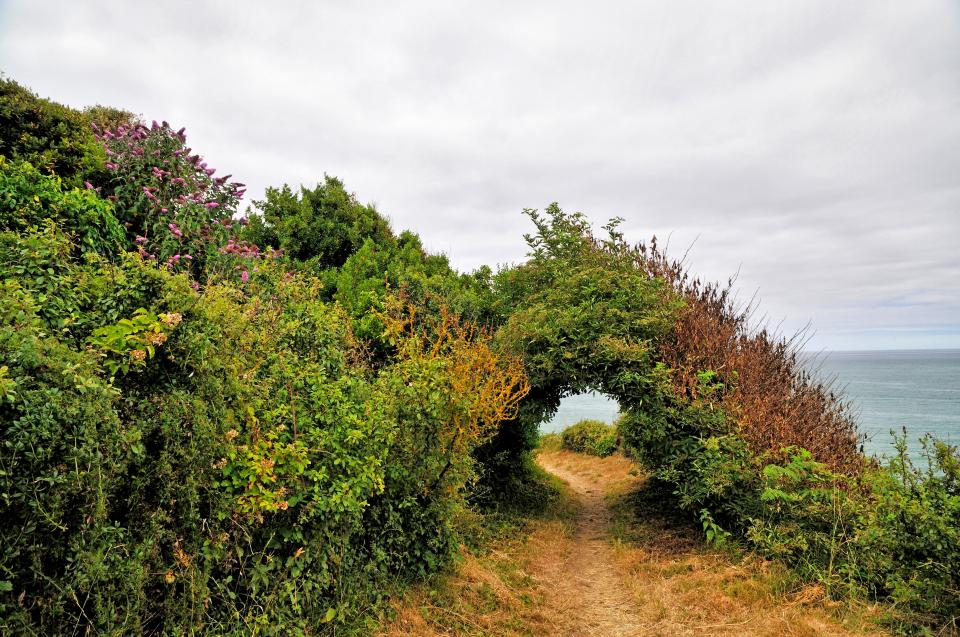
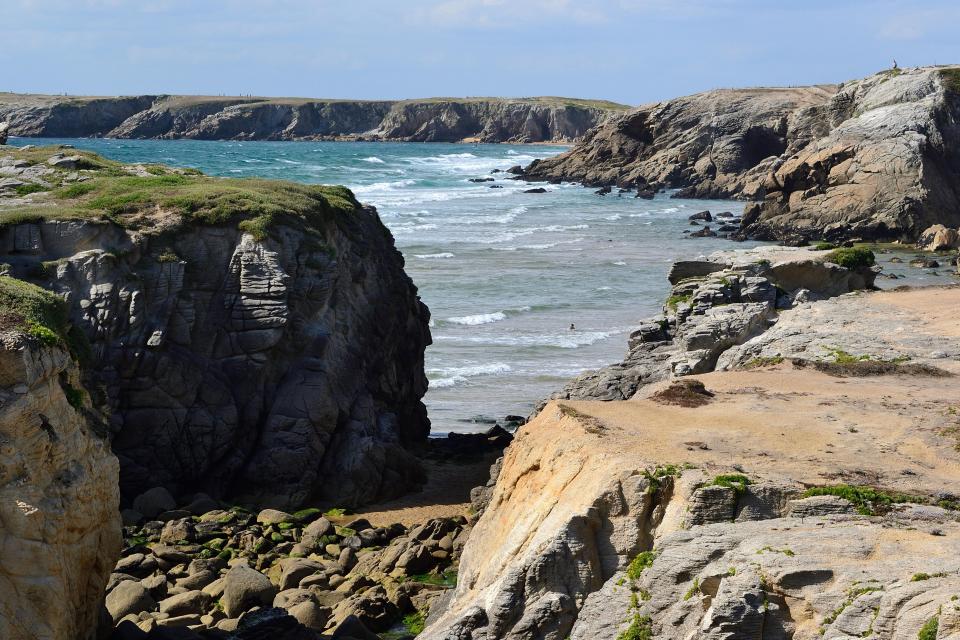
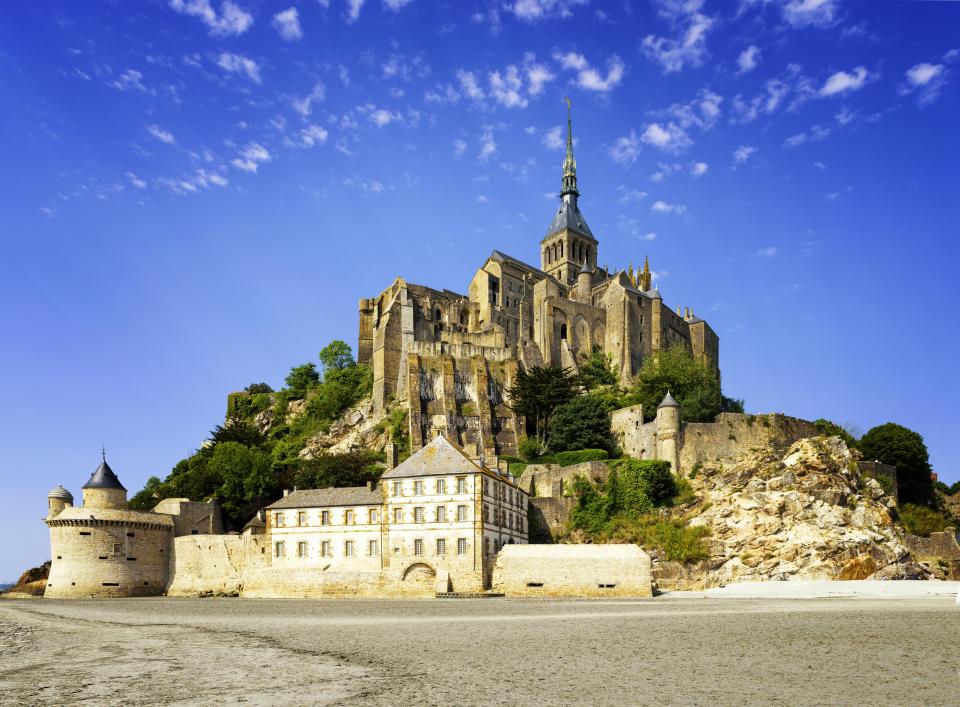

You must be logged in to post a comment Login